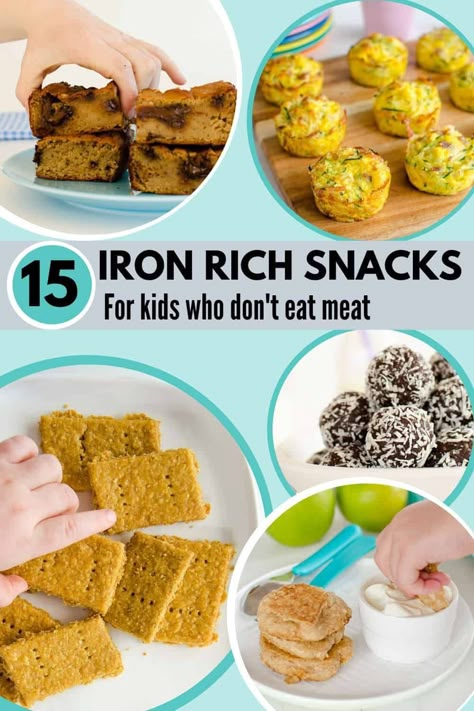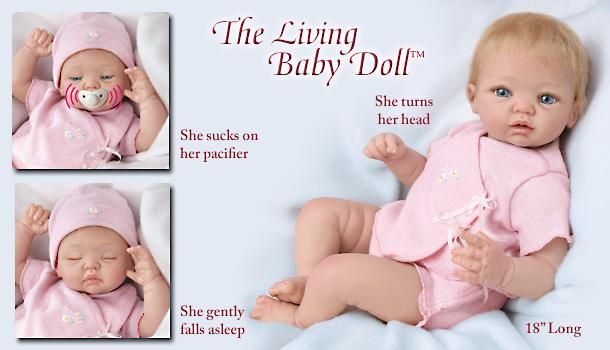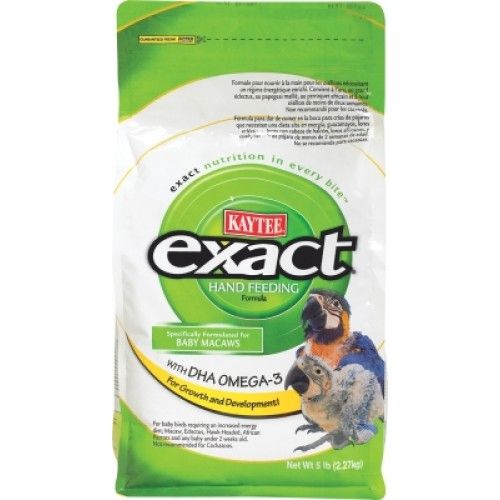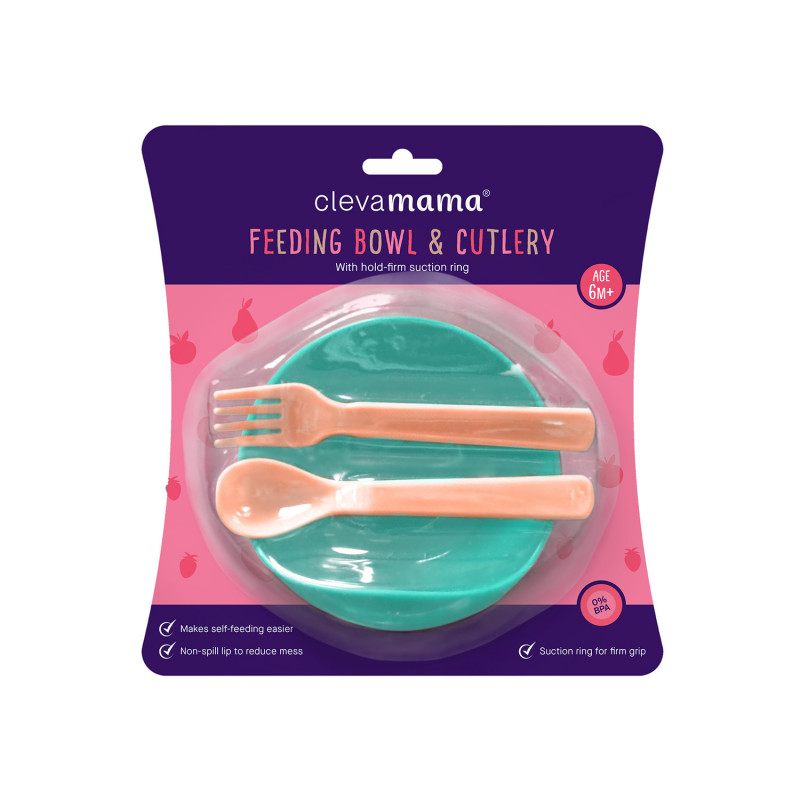Feeding a baby field mouse
How to Take Care of Baby Mice
By Lee Parker | Updated September 26, 2017Caring for orphaned baby mice is not easy; many infant mice don't make it through the first week due to heat loss, lack of nutrition or sickness. If the baby mouse is a pinkie; that is, without any fur, raising him to adulthood is difficult, but not impossible. With feedings every one to two hours and plenty of warmth, he has a decent chance of survival.
Supplies to Have on Hand
Being prepared is the first step in the successful raising of an orphaned baby mouse. Items to have on hand include Pedialyte, a small syringe, a heating pad or hot water bottle and soft nesting material such as old T-shirts, blankets and small stuffed animals. Puppy milk replacement, found at most pet food stores, is also important, as this is the closest option to mouse milk available.
Where to Start
Inspect the baby mouse first for any wounds or signs of illness such as blood around the nose, or labored breathing. You also will need to stimulate the baby mouse to go to the bathroom; he cannot do this on his own. Mimic the mother's natural way of licking his genitals by using a damp cotton swap, or the tip of your finger. You will need to do this after every feeding until the baby mouse is able to void on his own.
Full Bellies Are Important
Feed the baby mouse by filling a small 1 cubic centimeter syringe with puppy milk replacement and slowly administering it into his mouth. Be careful not to press too hard on the syringe or the mouse will aspirate; you will see milk come from his nose. Position the baby mouse upright and belly down for his feedings. For the first three feedings, dilute the puppy milk replacement with a little water and watch for diarrhea. If the stools are mustard yellow, everything is normal.
Warm Nests Make Happy Babies
When using a heating pad for your baby mouse, never place the mouse directly on the pad and always keep the pad setting on low.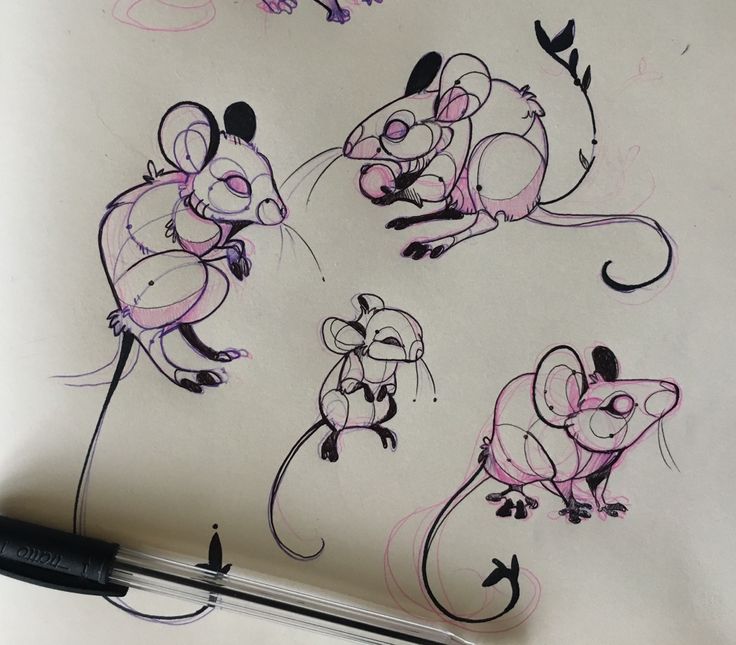 A too-warm pad can dehydrate a baby mouse quickly. If he has other orphaned siblings, keep all the baby mice together and ensure one does not wander off on his own. Fill the mouse's enclosure with plenty of bedding, both under and above the baby mouse. Do not cover the mouse in an airtight container, but do keep him under wraps to trap heat.
A too-warm pad can dehydrate a baby mouse quickly. If he has other orphaned siblings, keep all the baby mice together and ensure one does not wander off on his own. Fill the mouse's enclosure with plenty of bedding, both under and above the baby mouse. Do not cover the mouse in an airtight container, but do keep him under wraps to trap heat.
Tips and Tricks
Warm the formula for the baby mouse by placing it in warm tap water for a few minutes. The baby mouse will indicate when it is full, but a helpful trick for expected formula amounts is to weigh him first. The mouse's weight in grams, divided in half, equals the amount of cc's he should be eating. If the mouse refuses to drink, try using Pedialyte before attempting formula again.
References
- The Fun Mouse: Orphaned Mice
- Rat and Mouse Club of America: Orphaned Rats and Mice
- Rat Fan Club: Raising Orphaned Rats and Mice
- Fancy Mice: Baby Care
- The Complete Care of Baby Animals: Expert Advice on Raising Orphaned, Adopted or Newly Bought Kittens, Puppies, Foals, Lambs, Chicks and More; C.
 E. Spaulding, Jackie Clay
E. Spaulding, Jackie Clay
Photo Credits
What Do Baby Mice Eat?
As an Amazon Associate I earn from qualifying purchases.
It’s not easy to care for abandoned newborn mice; many newborn mice die in the first week owing to heat loss, nutritional deficiency, or disease. Raising baby mice is difficult since it has no fur but it isn’t impossible. It has a reasonable possibility of survival if fed several times each day and given enough warmth.
What comes to mind when you hear the term “mouse”? This may be the kind of small, grey animal with a chunk of yellow cheese in its paws that many people are familiar with. A mouse could also be running around your home, opening cereal boxes.
This is why it’s important to be aware of what baby mice eat in the wild. It will assist you in learning how to keep these pests out of your home. So, let’s look at what baby mice eat in the wild and how our homes have become attractive dining halls for mice.
What Do Baby Mice Eat?Baby mice will suck on their mother’s milk for the first two weeks of their life.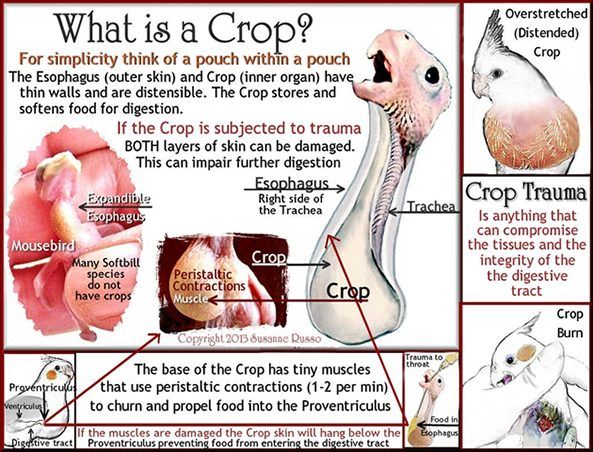 After that, baby mice can start eating solid foods, such as cooked rice and beans, cooked carrots, soft vegetables, and fruits.
After that, baby mice can start eating solid foods, such as cooked rice and beans, cooked carrots, soft vegetables, and fruits.
If they are still without parents, give them kitten milk formula with a syringe or pipet. Remember to feed them every two or three hours. This may mean getting up at night, but it is necessary if you want to keep the kittens alive.
The newborn mice will not have developed their teeth, so they won’t be able to chew on the food at first. After three or four weeks, you should consider adding some solid meals. When the mice begin opening their eyes and growing, this is one of the signals that it’s time to exterminate them. You should also note when their teeth begin to develop.
Begin by offering them high-quality, nutritious foods to encourage growth. Fruits, seeds, vegetables, greens, and rodent diets are examples of these items.
What Do Baby Mice Eat in The Wild? A Baby MouseMice are not picky. A mouse’s diet is surprisingly broad, and a mouse will do just about anything to get its hands on it.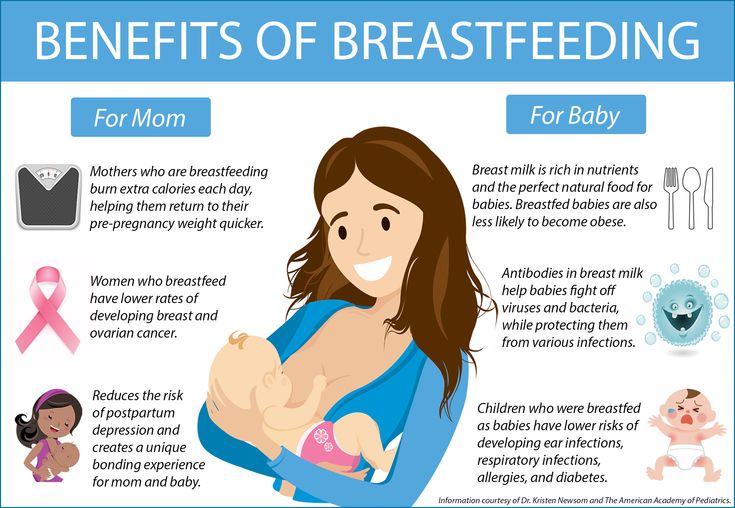 They’re natural foragers who enjoy consuming a wide range of foods in the wild. Although they have their likes and dislikes, they do have certain tendencies.
They’re natural foragers who enjoy consuming a wide range of foods in the wild. Although they have their likes and dislikes, they do have certain tendencies.
Mice, like most other rodents, prefer insects to meat. These creatures will also consume smaller snails, larvae, centipedes, cricket eggs, and worms as a source of nutrition.
What Do Baby Mice Eat At Home? Cheese for Baby MiceMice, like in the wild, will take what they can get. While mice aren’t fussy eaters, they do have their favorite foods. Here’s a list of some of the things that mice enjoy eating.
You may be shocked to learn that mice dislike cheese more than other foods if you grew up watching cartoons of mice chewing on a massive slice of Swiss. That being said, a mouse would not leave an excellent chunk of cheese behind. They will still consume any cheese they discover.
Mice are omnivores, so they eat both plants and animals. They may munch on any leftovers or insects that they discover around your house.
Mice are curious animals, and their food preferences reflect this. Instead of consuming a large chunk of food all at once, they like to nibble on many different things they’ve kept.
Mice are also hoarding animals. They enjoy rummaging through cupboards and pantries, gathering what they find, and bringing it back to their nests when food is in short supply.
Not only is this an annoyance in and of itself, but it also attracts pests like beetles, weevils, and other insects. This food storage may attract additional pests such as cockroaches, ants, and mice, causing a simple mouse infestation to rapidly develop into a full-blown pest issue.
Mice are generally unwilling to eat non-food items. If chew impressions are on cables, cords, wires, boxes, fabric other objects, this is due to the existence of a mouse nest rather than food consumption.
How To Feed Baby Mice?Step 1:Give your baby mouse some liquid nourishment. Baby mice drink mother’s milk. Instead, you’ll need to give your newborn mouse the milk it needs. Cow’s milk should be avoided. You may, instead, try soy formula, kitten formula made of goat’s or cow’s milk, or goat’s milk baby formula.
Baby mice drink mother’s milk. Instead, you’ll need to give your newborn mouse the milk it needs. Cow’s milk should be avoided. You may, instead, try soy formula, kitten formula made of goat’s or cow’s milk, or goat’s milk baby formula.
Every two hours, give them a good meal. Your newborn mouse will require feeding around the clock until it opens its eyes. You must feed your newborn mice every two hours for those between 0 and 2 weeks old. They only need to eat every 3-4 hours after that. They shouldn’t eat during the night once their eyes are open.
Warm the milk first. Check a drop on your wrist to see if it’s cold or hot enough. Using a syringe, eyedropper, or pipette, add milk to a mouse. With your non-dominant hand, firmly grip the mouse. With your other hand, hold the pipette and try to shimmy the probe into the mouse’s mouth. Warm milk should be used instead of cold water. This resembles stretching out and squirming
Step 3:Solid foods should be introduced gradually after your mouse’s eyes are open. It may begin to eat solid food when its eyes are open. Continue feeding it formula until the 4 to 6 weeks old, at which point it will be weaned. Hamster or kitten food, baby food, or soft vegetables can all be offered.
It may begin to eat solid food when its eyes are open. Continue feeding it formula until the 4 to 6 weeks old, at which point it will be weaned. Hamster or kitten food, baby food, or soft vegetables can all be offered.
To help a mouse go to the toilet, stimulate it. Baby mice can’t urinate or feces on their own because they’re babies. The mother would generally lick them to encourage them to eliminate them. Place a cotton ball or your finger in lukewarm water and gently move it over the mouse’s genitals until it has eliminated itself.
What Are The Natural Predators of Baby Mice?What are the most dangerous animals for mice? While it is not uncommon for some of the larger tarantulas to consume a mouse, most spiders do not consider mice to be a common meal, and instead may appear on a mouse’s menu. Where a substantial amphibian may occasionally capture and consume a mouse, the bulk of their diet is composed of tiny animals, such as insects.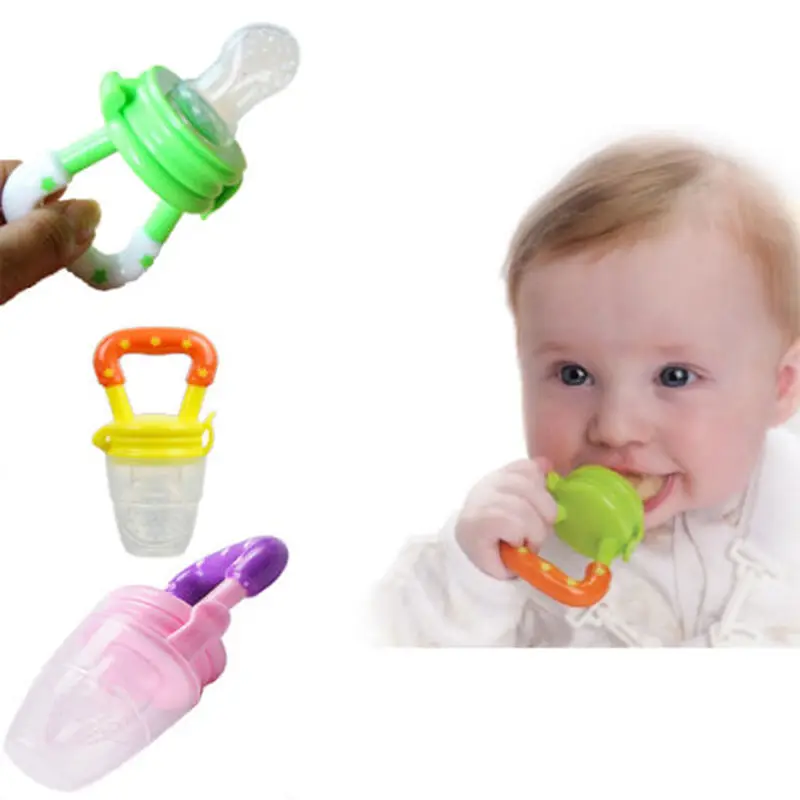
There are several animals that consume mice as part of their regular diet in order to maintain the rodents’ populations in check. These are the creatures believed to be the mouse’s natural predators, and they may be found across a variety of species.
Birds
Hawks, eagles, and owls consider mice a welcome change of pace to be hunted and snared. The heron, crow, and blue jay are non-raptor birds that will eat rodents if they find them.
Reptiles
Although larger lizards are known to consume mice, snakes are generally the primary food source for them. People who keep snakes as pets are aware of the snake’s preference for a rodent dinner, but they are more frequently provided with frozen rodents rather than live mice because of their personal preferences or fears that their pets will be injured by food trying to defend themselves.
Mammals
Cats are commonly thought of as the mouse’s greatest adversary, but once they’ve finished playing with them, house cats will not eat mice.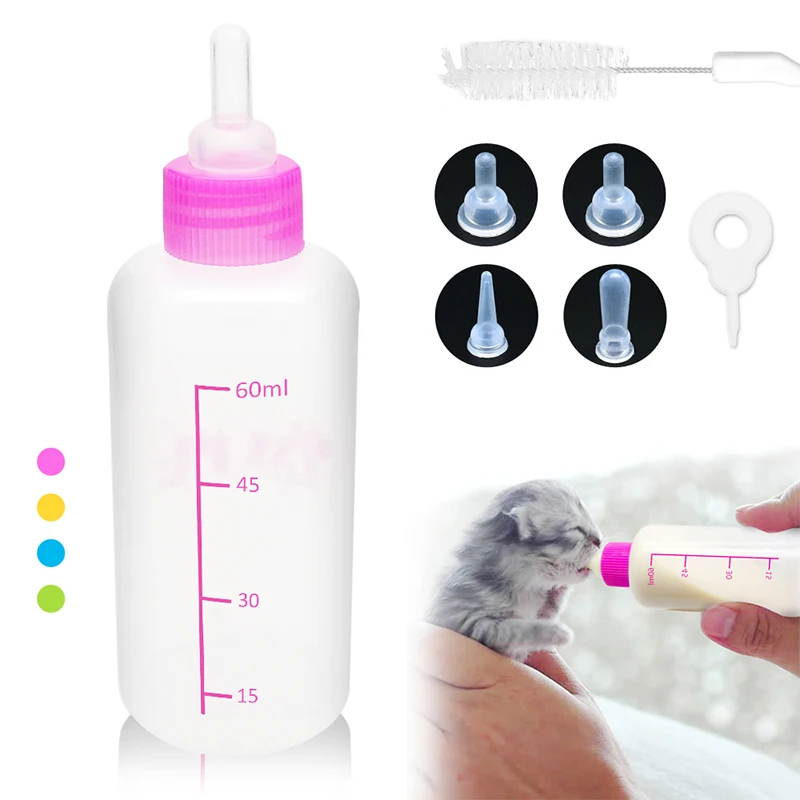 Their feral counterparts and wild cat relatives, however, actively seek out mice for food. Cats, like other species, will consume mice to fill their stomachs. Tigers, lions, and jaguars require more substantial meals, but they will still nibble on them to keep their hunger satisfied. Dogs are not as fussy about eating mice as cats are; nevertheless, they are just as ready to do so in order to survive.
Their feral counterparts and wild cat relatives, however, actively seek out mice for food. Cats, like other species, will consume mice to fill their stomachs. Tigers, lions, and jaguars require more substantial meals, but they will still nibble on them to keep their hunger satisfied. Dogs are not as fussy about eating mice as cats are; nevertheless, they are just as ready to do so in order to survive.
Humans
There is another rodent-eating creature that has been observed. It’s a mammal, but it differs from the others in several respects. This species differs from the other mammals listed above because it does not eat mice. Locals avoid members of these societies because they are located in certain countries and are often shunned by those from throughout the rest of the globe. The human is one of the mouse’s greatest foes, and it is a member of this distinctive species.
Humans, as a species, are perhaps the pickiest eaters on the food chain. Humans’ tastes have evolved to the point where we are repulsed by certain foods, particularly those that are known to be parasite-carrying plague transmitters.
Mice are eaten on a regular basis in certain areas of the world, where circumstances demand that food be acquired where it may be found. Though many of the countries that offer mice on their menu no longer struggle financially, traditional dishes are still served, albeit as cultural delicacies for visiting tourists with strong stomachs. In Vietnam, Korea, China, Zambia, and Malawi, rats are known to be eaten in many ways.
Are Baby Mice Healthy To Eat?Mice are now a trendy source of protein, according to the Austrian Times, having been proven that there’s nothing edible that hasn’t been transformed into a delicacy somewhere in the world. It should be prepared similarly to other meats, just in smaller mouse-sized portions.
It’s possible to eat sewer rats. While you can eliminate many of the pathogens by cooking at a high temperature, rodents still feed on waste and human/animal remains. It is possible to eat cooked rats, although doing so might cause various illnesses and even death if not properly done.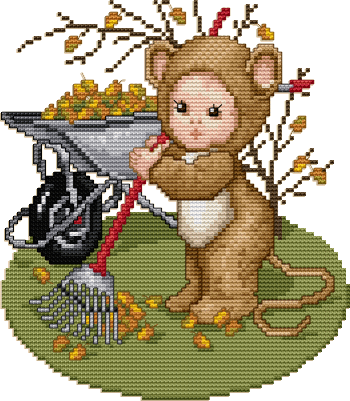
Amazon and the Amazon logo are trademarks of Amazon.com, Inc, or its affiliates.
Peculiarities of caring for young animals. Mice
Special care for young animals
Mice develop rapidly, 6–7 days after birth, their body weight doubles, and the size of the body also increases. The sex of animals immediately after birth is difficult to distinguish, but females grow more slowly than males.
After 3-5 days after birth, the ears of ornamental mice open, hair begins to appear on the body. The eyes of mice open at the age of 14 days.
After two and a half weeks after birth, during the absence of the female, the cubs can be taken out of the nest for a while. In this way, you can check their health, as well as determine what gender they are. At the 3rd week of life, the animals get out of the nest and begin to feed on their own, eating, in addition to mother's milk, other types of feed. At this time, you can transplant offspring from the female. nine0003
In the first weeks of life, mice grow very quickly and in a month reach a weight of 11–12 g. Body length at this age is 6 cm, tail length is 5 cm. Depending on the diet and conditions of keeping, the body weight of animals may vary slightly.
Body length at this age is 6 cm, tail length is 5 cm. Depending on the diet and conditions of keeping, the body weight of animals may vary slightly.
The sex of decorative rodents is determined by external signs. In females, for example, nipples are visible from early childhood. In males, gender immediately after birth is almost not expressed - the testicles are not palpable, since in the first days of the animal's life they lie in the abdominal cavity, and descend into the scrotum only in the second week of life. nine0003
Decorative mice grow and develop much more slowly than, for example, voles and other wild mice. The cubs reach full development in a month, by this period they have puberty.
It is important to monitor the growth of the young. Regular weighing of animals helps to control this process. The length of the body is measured from the tip of the nose to the base of the tail using a centimeter tape. When carrying out these procedures, care must be taken in handling mice, to prevent their anxiety.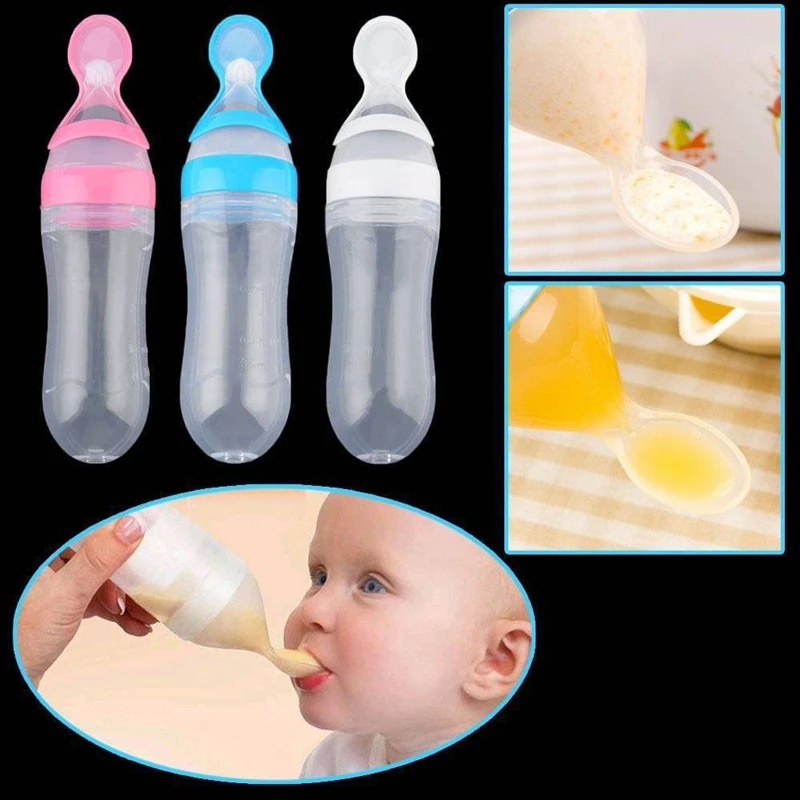 nine0003
nine0003
Comparing the measurement results with those given in Table. 6 indicators, we can conclude how correctly the development of animals occurs. An increase in body weight and size is an indicator of normal nutrition. In case of deviations, it is recommended to approach the diet of rodents more carefully.
Table 6
Weight of decorative mice depending on age
It is possible to separate cubs from their parents after the manifestation of their independence. Males and females can be kept together in a common cage until puberty. At this time, young animals should be fed in the same way as their parents, paying attention to the fact that the diet includes as much vitamin food as possible (sprouted wheat, fresh herbs, fish oil, etc.). nine0003
During lactation, it is recommended to include oatmeal, boiled or pasteurized milk and infant formula in the diet of lactating females. The same products can be given as complementary foods to mice from 3 weeks of age. After some time, other types of feed are gradually introduced into the diet of young animals: bran, milk, dried fruits, crushed grain mixture consisting of oatmeal, sunflower seeds, corn and peas. New types of food are given in small quantities so that the body of mice can gradually get used to them. Green and succulent foods should be introduced into their diet very carefully so as not to cause digestive upset. nine0003
In the event that females do not have milk, newborn mice are transferred to artificial nutrition. They are fed from a pipette with 26% dry milk (diluted at the rate of 2 tablespoons per 0.5 cup of warm water), 2-3 drops 6 times a day. After about 3 weeks, they are transferred to 5 meals a day, and after another 1.5–2 months - to 2 meals a day. Feeding is done 2 times a day, morning and evening.
Young animals should be given limited amounts of water during growth and development. nine0003
Both with natural and artificial feeding of rodents, it is necessary to regularly give them types of feed rich in vitamins and microelements.
When artificially feeding decorative mice, it is recommended to carefully observe sanitary and hygienic rules. Drinkers and pipettes should be washed and boiled before each use to prevent disease.
Already shortly after giving birth, the female mouse is capable of repeated fertilization, since at this time she has the so-called postpartum estrus. Therefore, during this period it is better not to allow the male to her, since pregnancy that occurs during the period of feeding the cubs can greatly weaken the body of the female. nine0012
As mentioned above, artificial feeding is a very difficult task, and many cubs, despite all human efforts, do not survive. One of the reasons for this may be that the baby was born very weak or artificial feeding began too late for him. Another common cause of death for motherless babies is inhalation of milk. In addition, mice can die from infection, since no food other than mother's milk contains antibodies that prevent harmful viruses and bacteria from entering the animals' body. nine0003
nine0003
Grown-up mice
Caring for young animals, while observing the basic rules of keeping, does not require much effort, especially if the female takes care of the offspring and does not refuse to feed. In addition to regular weighing, you should also pay attention to the general condition and behavior of the mice. This allows you to timely identify deviations in physical development and correct them.
Young mice are especially shy and should be gradually accustomed to human presence. When examining and feeding, try to avoid sudden movements and loud noises. nine0003
This text is an introductory fragment.
Young Animal Care
Young Animal Care Hatched chicks do not regulate body temperature well, so they need to create an optimal temperature regime for them.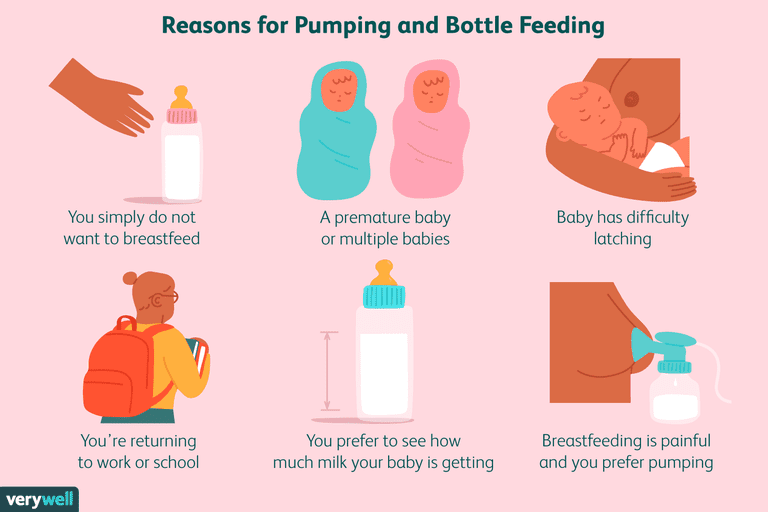 In the first week, the temperature should be 32 ° C, in the second - 29°C, third - 27 °C, fourth - 24 °C, fifth - 21 °C, in
In the first week, the temperature should be 32 ° C, in the second - 29°C, third - 27 °C, fourth - 24 °C, fifth - 21 °C, in
Young Animal Care
Young Animal Care The temperature in the room where the ducklings are kept should be 28–30 ° C in the first week, 20–22 ° C in the second, and 18–20 ° C in the third. Chicks should be protected from drafts. We recommend using wood shavings or
as bedding. nine0060 Young stock careYoung Animal Care After hatching, the goslings are allowed to dry under the goose, then they are placed in a basket or box and kept in a warm place with good ventilation. After the withdrawal of all the goslings in the evening, they sit down with the goose and see if she accepted them. In addition to your own, you can go to the goose
Young Animal Care
Young Animal Care You can grow turkey poults under a brood hen, in cages, on a paddock. The first 8 weeks are the most crucial period, as a rule, at this time, the chicks are raised under a brood hen or indoors, and then they are released for walking. Up to 18
The first 8 weeks are the most crucial period, as a rule, at this time, the chicks are raised under a brood hen or indoors, and then they are released for walking. Up to 18
Young Animal Care
Young Animal Care After drying, the chicks are placed in cardboard boxes or boxes, 15–20 heads per 1 m2 of floor area. The floor of the box is covered with paper or woven bedding, which is changed every day. To heat the room in which the cesareans are kept, use a lamp,
Features of caring for a kitten
nine0002 Features of caring for a kitten Taking care of a kitten is not just about washing its bowl and cleaning out its litter box. It is also care for the coat, eyes, ears and paws of the kitten. Counts. that a three-month-old baby has already completed a course of study with his mother and learned some hygiene rules. He14 Special care for different breed groups
fourteen Features of care for different groups of breeds Dogs have always helped a person to hunt, herd livestock, guarded, etc. Depending on the work that they had to do, dogs began to be classified as hunting, hounds and greyhounds, service dogs,
Depending on the work that they had to do, dogs began to be classified as hunting, hounds and greyhounds, service dogs,
Young Animal Care
Young Animal Care The jigging of rabbits from a rabbit is one of the most crucial moments in rabbit breeding. If, after weaning from the mother, the young animals are not provided with the correct conditions for keeping and feeding, this threatens with colds and gastrointestinal diseases. Not
5 CAT BREEDS AND CARE
nine0002 5 CAT BREEDS AND PECULIARITIES OF CARE OF THEM Currently, there are many breeds of cats that differ from each other not only in appearance, but also in character. When choosing a future pet, you should be aware of the habits inherent in each breed, and in whichSpecial care for different breeds
Features of care for various breeds Persian cats have perhaps the thickest and longest hair among all breeds, so it is hair care that should be given special attention. The Persian cat should be combed daily, carefully unraveling the tangles. Not
The Persian cat should be combed daily, carefully unraveling the tangles. Not
8 Peculiarities of caring for puppies of different breeds
8 Features of caring for puppies of different breeds By purchasing a puppy, you get not only a pet, but also a friend. Unfortunately, sometimes dog owners unknowingly harm their pets, because they do not know what kind of care puppies of a particular breed need. Often dogs
Special care for different breeds
Features of care for various breeds Persian cats have perhaps the thickest and longest hair among all breeds, so it is hair care that should be given special attention. The Persian cat should be combed daily, carefully unraveling the tangles. Not
Special care for hard coat
Features of caring for coarse hair Rigid outer, wiry hair reliably hides a short, dense and delicate undercoat. Such a cover well protects the dog from rain, cold and heat, insect bites and much more. Coarse wool almost no
Such a cover well protects the dog from rain, cold and heat, insect bites and much more. Coarse wool almost no
Features of keeping a puppy and caring for him
Features of keeping a puppy and caring for him The puppy requires constant attention, especially in the first days of life in a new
for him4 Hound breeds and their care
four Breeds of hounds and features of their care With the advent of new types of hunting in the Middle Ages, many new breeds of hounds were bred. Their appearance, as well as field qualities, largely depended on the tasks being solved, as well as on the characteristics of the terrain and the beast that lived there. AT
Special care during shedding
Features of care during molting Periodically, chickens molt - the replacement of old feathers with new ones. The replacement mechanism is due to the expulsion of old, dying feathers, new, growing ones. There are two types of molting - juvenile and
The replacement mechanism is due to the expulsion of old, dying feathers, new, growing ones. There are two types of molting - juvenile and
What mice feed their cubs. Where mice live in the wild
nine0127House mice are rodents that live in people's homes. In the photo, the house mouse looks like ordinary mice. Is there a difference between them?
Because house mice have adapted so well to living with humans, they have been able to spread throughout the world, thus becoming one of the most common mammals. Mice are also pets and model organisms for laboratory research.
House mouse appearance
The house mouse is a long-tailed small rodent with a body length of 6.5 to 9.5 cm. In relation to the length of the body of the tail is less than 60%.
Upper tail covered with ring-shaped horny scales and short sparse hairs. The weight of an adult is from 12 to 30 grams. The ears are small and rounded.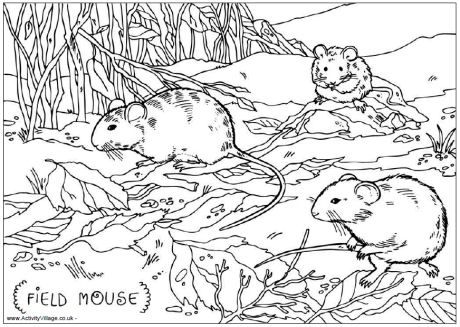 The skin has a brownish-gray or dark color. The color of the abdomen is from white to ash-gray. Desert mice have a light yellowish-sand color and a white belly.
The skin has a brownish-gray or dark color. The color of the abdomen is from white to ash-gray. Desert mice have a light yellowish-sand color and a white belly.
Domesticated mice are variegated, blue-gray, yellow, black or white. Females have five pairs of nipples. The house mouse has no sexual dimorphism. nine0003
Distribution of the house mouse and its subspecies
The house mouse is a cosmopolitan species and lives almost everywhere. It is absent only high in the mountains, Antarctica and the Far North. The main factors that limit the distribution of house mice are high humidity and low temperatures. On the territory of Russia, the house mouse is not found in the mountain tundra, in the interfluve of the Lena and Yenisei, in Taimyr, in most of northeastern Siberia.
Presumably the home of the house mouse is North Africa, Western Asia or North India. In Western Asia, the house mouse is known in fossil form. Throughout the world, the house mouse has spread along with humans. nine0003
nine0003
About one hundred and thirty subspecies of the house mouse have been described so far. They are grouped into four main subspecies.
1.M.m. castaneus - lives in Southeast Asia;
2.M.m. bactrianus - lives in Asia with the exception of the South-East region;
3.M.m. domestic - common in Australia, America, Europe and most of Africa;
4.M.m. musculus - lives in Eastern Europe, starting from the territory of Poland and further eastward, occupying most of Russia. nine0003
It has long been thought that the Japanese subspecies M.m. molossinus is the fifth "major" subspecies, however according to recent studies it is a hybrid between M.m. castaneus and M.m musculus.
Interestingly, in ancient Rome, mice and rats were considered the same species, so rats were simply called the big mouse.
House mouse lifestyle
House mice live in a wide variety of biotopes and landscapes, including anthropogenic ones. In general, it can be argued that house mice are very closely related to humans and are a synanthropic species. The house mouse often settles in outbuildings and residential buildings. In the north of their range, mice make seasonal migrations. At the end of the summer period or at the beginning of autumn, animals begin to massively migrate to the so-called "feeding places", which include warehouses, grain and vegetable stores, as well as residential buildings. In autumn, the range of migrations can reach up to five kilometers. Often, house mice hibernate in stacks, haystacks and forest belts. nine0003
The house mouse often settles in outbuildings and residential buildings. In the north of their range, mice make seasonal migrations. At the end of the summer period or at the beginning of autumn, animals begin to massively migrate to the so-called "feeding places", which include warehouses, grain and vegetable stores, as well as residential buildings. In autumn, the range of migrations can reach up to five kilometers. Often, house mice hibernate in stacks, haystacks and forest belts. nine0003
In spring, house mice leave their wintering grounds and return to their natural habitat, gardens, orchards and fields. In the south of the range, in semi-deserts and deserts, they often live outside human habitation throughout the year. Under such conditions, house mice gravitate towards various water bodies and oases.
In their natural habitat, the house mouse prefers soft, not too dry soils. In them they dig small holes with a simple device. The length of the hole reaches one meter, and the nesting chamber is located at a depth of 20-30 centimeters and has from one to three entrances. In winter, mice often deepen their burrows up to 50-60 centimeters. The diameter of the nesting chamber is from ten to twenty-five centimeters. Inside the chamber, the animals arrange bedding using soft plant rags. Often, house mice occupy burrows belonging to other rodents: gerbils, mole rats, voles. Cracks in the ground and natural voids are also used for housing. nine0003
In winter, mice often deepen their burrows up to 50-60 centimeters. The diameter of the nesting chamber is from ten to twenty-five centimeters. Inside the chamber, the animals arrange bedding using soft plant rags. Often, house mice occupy burrows belonging to other rodents: gerbils, mole rats, voles. Cracks in the ground and natural voids are also used for housing. nine0003
House mice settled near people equip their dwellings in the most protected and secluded places. Most often they live in attics, in household waste, garbage heaps and under the floor. To arrange nests, house mice use any available material: artificial fibers, feathers, scraps of fabric, paper.
Under natural conditions, house mice are nocturnal and twilight. But living next to a person, they adjust the daily regimen depending on the nature of human activity. Under artificial lighting, a house mouse can maintain round-the-clock activity, reducing it only during those periods when people are active themselves.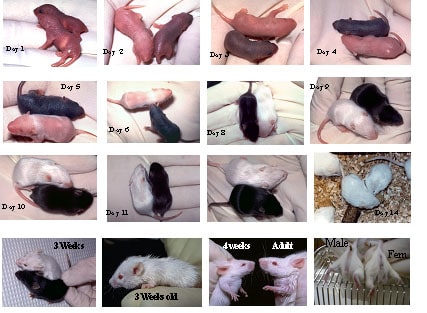 The activity of the house mouse in this case has a polyphasic character: within one day there can be fifteen to twenty periods of wakefulness lasting from twenty-five minutes to one and a half hours. Like many other members of the mouse family, house mice gravitate towards constant routes when moving. nine0003
The activity of the house mouse in this case has a polyphasic character: within one day there can be fifteen to twenty periods of wakefulness lasting from twenty-five minutes to one and a half hours. Like many other members of the mouse family, house mice gravitate towards constant routes when moving. nine0003
Such routes are easy to follow due to the visible piles of dust and droppings that are held together by urine.
The house mouse is a very nimble, mobile animal. They run fast enough, reaching speeds of up to 13 km / h, jump well, climb and are good swimmers. However, they rarely leave their nest. Under natural conditions, each mouse has its own individual area. In males, it reaches 1200 sq.m, and in females - up to 900 sq.m. However, if the population is dense enough, mice prefer to settle in family groups that consist of one dominant male, as well as several females with their offspring, or small colonies. nine0003
Relations within the colony are hierarchical. In relation to each other, adult males are quite aggressive. In contrast, females show aggression much less frequently. Skirmishes are rare within the family group, and as a rule they come down to expelling the grown offspring.
In relation to each other, adult males are quite aggressive. In contrast, females show aggression much less frequently. Skirmishes are rare within the family group, and as a rule they come down to expelling the grown offspring.
House mouse food
Under natural conditions, the house mouse is a typical seed-eater. It feeds on the seeds of cultivated and wild plants. Preference is given to seeds of Compositae, legumes and cereals. nine0003
The diet of the house mouse also includes carrion, insects and their larvae. The green parts of plants are also eaten, which, depending on how accessible drinking water is, can account for up to a third of the food consumed. Every day, a house mouse consumes up to three milliliters of water. If the relative humidity of the air was about thirty percent, and the food was exceptionally dry, then during the experiment, laboratory mice died of dehydration on the 15-16th day.
With great desire, mice eat dairy products, chocolate, meat or grain. Under natural conditions, under the condition of an excess of food, stocks are made.
Under natural conditions, under the condition of an excess of food, stocks are made.
House mouse breeding
The house mouse is extremely fertile. If conditions are favorable (for example, in stacks and heated rooms), then it can breed throughout the year. Under natural conditions, the breeding season lasts from March to November. Re-entry into estrus is observed in females already 12-18 hours after the birth of offspring. During the year, a house mouse can bring from five to fourteen offspring. Each litter has three to twelve cubs. nine0003
Pregnancy lasts about twenty days (19-21). Cubs are born naked and blind. After about ten days, their bodies are completely covered with hair. After two weeks of life, their eyes open, and at the age of three weeks they become independent and capable of settling. The house mouse reaches puberty at the fifth to seventh week of life.
It should be noted that males, trying to attract a female, emit ultrasonic calls at 30-110 kHz. In their complexity, these cries are comparable to the singing of birds. The house mouse easily interbreeds with the mound mouse, which lives, for example, in the Black Sea region. nine0003
In their complexity, these cries are comparable to the singing of birds. The house mouse easily interbreeds with the mound mouse, which lives, for example, in the Black Sea region. nine0003
The offspring from such crosses is quite normal and viable. A number of zoologists consider the mound mouse to be a subspecies of the house mouse.
House mouse enemies
The house mouse has many enemies, primarily predators. These are birds of prey, snakes, large lizards, mongooses, small representatives of the weasel family, foxes, cats, crows, and even.
Serious competition for house mice is that they often kill and even partially eat their small relatives. nine0003
At the same time, mice can act as predators themselves, which is generally unusual for them.
Once upon a time, mice were accidentally brought to the island of Gof, located in the South Atlantic, and they took root there. Since they had no natural enemies on the island, they multiplied very quickly and now their population is estimated at 0.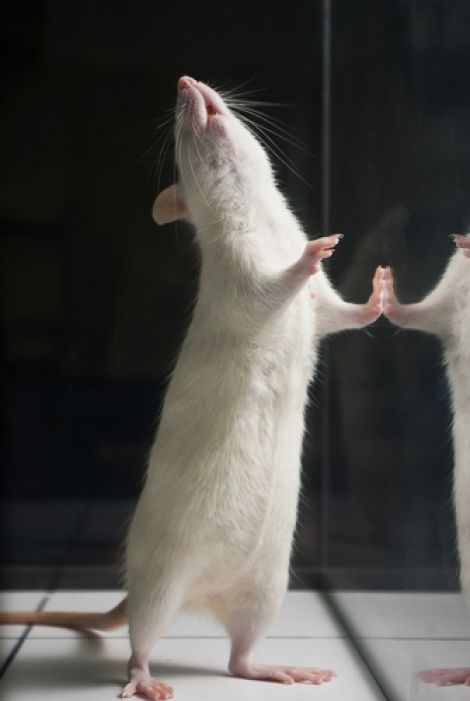 7 million individuals. It should also be noted that these island mice are three times larger than their mainland counterparts. They unite in groups and attack bird nests with them, eating chicks. nine0003
7 million individuals. It should also be noted that these island mice are three times larger than their mainland counterparts. They unite in groups and attack bird nests with them, eating chicks. nine0003
It must be said that Gough Island is the most important colony of sea birds, among which we can mention such birds as Schlegel's typhoon and. These birds do not nest anywhere else. However, despite the fact that albatross chicks can reach a height of one meter and weigh 250 times more than the mice of this island, they practically do not move and are unable to protect themselves.
As a result, the mice literally gnaw through the bodies of the chicks and inflict deep wounds on them. According to scientists, mice destroy over a million chicks on this island every year. nine0003
House mouse lifespan
Under natural conditions, the life expectancy of these rodents is a year and a half. However, in captivity, they can live up to three years. The life expectancy record is almost five years (1819 days).
House mouse sense organs
The sense organs of these rodents are very well developed. True, the eyesight of a house mouse is quite weak.
Like most other rodents, they are farsighted. They also have very acute hearing. The range of frequencies perceived by them is very wide - up to 100 kHz. For comparison, the upper human threshold is 20 kHz. In low light, the house mouse is perfectly oriented with the help of vibrissae. The role of smell is extremely high in the life of mice, which is necessary both for searching for food and for recognizing relatives. nine0003
Each mouse has sweat glands on its paws, with which they automatically mark the territory. If the mouse is very frightened, then a substance is released into the urine that causes fear and flight in other animals. Moreover, the smell is quite stable, and lasts up to a quarter of a day, informing other mice about the insecurity of this place.
Moreover, if the signal substance was left by the male, then all individuals react to it, while only females react to the female's mark, while males ignore it. nine0003
nine0003
House mouse and man
House mice are pests and carriers of a number of dangerous infections such as plague, etc. At the same time, mice play a very important role as laboratory animals. On July 1, 2013, a monument to a laboratory mouse was even erected in Novosibirsk for its contribution to experimental medicine and genetics.
If you find an error, please highlight the text and press Ctrl+Enter .
Description of the field mouse nine0237 :
- Body length not exceeding 12 cm, excluding tail. The thin tail makes up 70% of the body length.
- Body oblong. Hind feet are elongated, protrude forward when running.
- Long muzzle, small round ears, oblong nose.
The fur is hard, coarse, short. Colors can be different - gray, brown, ocher or beige. A straight line of black or brown shade runs along the spine. The color of the abdomen is white. At the base of the hairline has a dark shade. Small spots may be present on the chest. nine0003
nine0003
The vole mouse has unique teeth , a pair of long incisors on the lower jaw grow throughout her life. To prevent their excessive growth, and they grow at a rate of 1-2 mm per day, the mouse is forced to continuously grind them on solid objects.
As for weight, the average animal does not weigh more than 20 grams.
Photo
Distribution of animals
This representative of the fauna is widely distributed in Europe. Also, animals can be found in China, Mongolia, Denmark, Finland, Korea, Taiwan. In the Russian Federation, the rodent is common in Primorye, Siberia, and the Urals. Often settles on the hills, climbs low into the mountains. nine0003
Occurs near the Black and Azov Seas. Does not like desert forest-steppes and continuous forests. Perfectly takes root in moist interfluves .
Prefers overgrown meadows with small depressions, collective farm arable lands, sunny edges of deciduous forests and, of course, kitchen gardens. It can be found in greenhouses, greenhouses, cellars, barns, abandoned utility sheds, and even in residential areas.
It can be found in greenhouses, greenhouses, cellars, barns, abandoned utility sheds, and even in residential areas.
IMPORTANT! With the onset of the autumn period, rodents move into stacks, haystacks, straw bales. nine0003
Reproduction
The breeding season of the vole mouse is from early spring to mid-autumn. In one season, the animal is able to bring 3-4 offspring . In rare cases, up to 5-6. Bearing cubs lasts 21-23 days. In one litter, 5-7 babies are usually born.
Babies are born helpless and blind, but they develop very rapidly :
- 12-14 days after birth, they begin to see clearly.
- 30 days after birth become independent. nine0241
- Juveniles are capable of giving birth to young as early as 90-105 days after birth.
How long does a field mouse live? The life expectancy of a field mouse can reach 7 years, but in the wild, animals live, as a rule, for a year or two.
Now imagine how fast rodents can breed in just one summer season, provided there is plenty of food and sun.
Lifestyle
In summer and spring field mice are active in the evening and at night. In autumn and winter, they can be active during the day. They do not hibernate in winter. nine0003
How vole mice hibernate :
- Natural hiding places or earthen passages can be used as minks.
- Their burrows reach 3-4 m in length and have 2-4 exits, one of which leads to a watering place.
- Dwellings must have a nesting chamber and 2-3 pantries in which winter supplies are stored.
- Storerooms are located at a depth of 0.5-1 m.
IMPORTANT! Rodents living in swampy areas do not dig holes. They build nests. The main material is grass. Such dwellings are usually located on high bushes. nine0003
Distinctive features
Vole mice have their own, distinctive features from other rodents :
- Depending on the habitat (eastern and western), individuals have different colors and sizes.
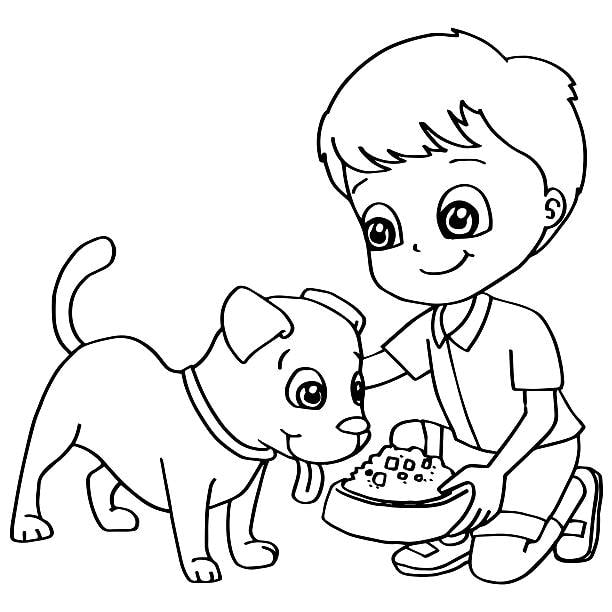
- Differs from other rodents in the presence of a flat strip along the spine.
- Unlike mice, it has a larger body size.
- Differs from the Dahurian hamster in a longer tail.
- Unlike pied, it has a longer period of puberty - about 100 days. nine0241
- Compared to other rodent subspecies, the field mouse has an underdeveloped pinna.
- The fur of field mice is coarser. And adults often have soft spines, like hedgehogs.
- Field mice belong to the mobile subspecies. They are characterized by seasonal feeding movements.
- May be common in swampy areas. At the same time, they use grass nests as burrows.
It is very common for mice to be mistaken for other types of mammals that look like voles. nine0236 The most common species of rodents in appearance resembling mice :
- . Despite this name, this animal actually belongs to the mouse family, but differs from voles in its large size.
- .
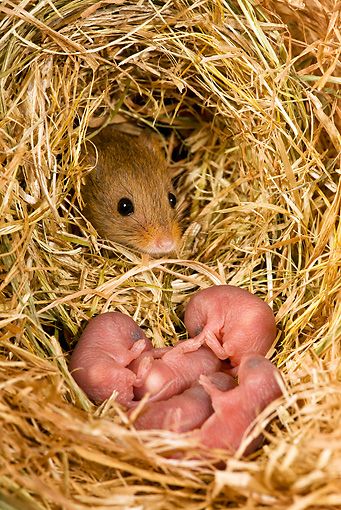 Lives underground and belongs to the hamster family.
Lives underground and belongs to the hamster family.
As well as rodents from the family of mice-voles:
- and . Outwardly similar to mice, but have a number of distinctive features.
- . Forest inhabitants, differing from the field in the color of the fur coat. nine0241
- . This species lives in colonies and is able to make significant, up to 15 kg, stocks for the winter.
What harm is done to a person?
Voles can cause significant damage to both crop storage areas and plants in the fields. They can damage the vegetables planted in the garden and spoil the preparations for the winter in the cellar.
Moreover, these rodents are carriers of infections fatal to humans such as leptospirosis, tularemia, tick-borne typhoid fever. nine0003
Methods of struggle and protection
The main difficulty in the fight against field mice is that they live in places hidden from human eyes. This means that it is rather problematic to catch or poison them.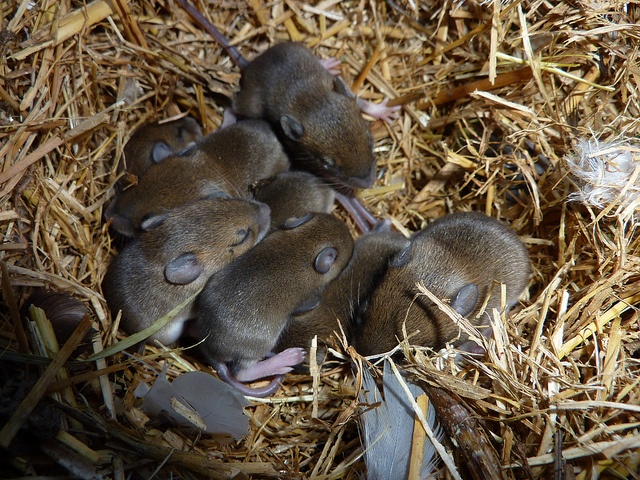 Therefore, the first priority in the fight against voles is the need to find and destroy their habitat . You can do this in the following ways.
Therefore, the first priority in the fight against voles is the need to find and destroy their habitat . You can do this in the following ways.
Drive mice out of the area
nine0237 :
- Mow long grass, dry leaves and weeds. You also need to get rid of branches and piles of plant debris. All of these are great places to build burrows.
- Fruits that have fallen from the tree should not be left on the site, as they are an easily accessible source of food.
- Digging up the site can help get rid of burrows and underpasses.
- To prevent rodents from spoiling fruit trees, a fine-mesh net is dug into the ground around the trunks. The same can be done around the perimeter of the entire site. nine0241
We use repellers
The use of special repeller devices can speed up the process of expelling voles from your territory. They are installed around the perimeter of the site and provide protection from moisture.
Using mousetraps
Ordinary mousetraps can also help in the fight against mice. Experienced gardeners recommend installing these devices on the site in early spring and late autumn , since it is at this time that mice reproduce most actively. In order not to harm pets, mousetraps can be covered with a box, this will not stop mice in pursuit of bait. nine0003
Using poisons
In late winter and early spring, the use of poisons is very effective. At this time, the mice are hungry and not very picky about food. Poisons are placed directly in the burrows.
How to get rid of field mice in the house?
If you have mice in your home, use time-tested, traditional methods :
- Mousetraps. At the same time, do not forget about safety measures so that people and pets do not suffer. nine0240 Repellers. Special devices are safe for people and pets, but have a negative effect on mice.
- Poisons can be used with all precautions.

- Cat. The most effective, proven and safe "remedy" for mice. If you don't have a cat at home, borrow it from friends for a while.
Thus, it is quite possible to get rid of mice on the plot or in the house. It is enough to create unbearable living conditions for them. And so that voles do not reappear, prevention is needed - keeping the site clean, timely cleaning of plant debris and food waste. nine0003
Video
In the video you can see what field mice look like:
In the wild, mice only mate during the warm season. In winter, females do not estrus, and males do not care for a partner. At home, rodents are ready to mate all year round. Fans of these animals should know how mice breed so as not to harm their pets.
Mating rodents
Allows females to become capable of carrying offspring already on the 28th-50th birthday. But the cubs of the decorative animal are born fatter and in greater numbers. Therefore, the breeder should not mate a female that has not reached the age of two months. nine0003
nine0003
Interesting!
Obese animals are unable to reproduce. Animals preparing for mating should be fed greens and sprouted grains so that they do not become overweight.
If a person keeps one pair of mice, then the male and female live in different cages. They are planted next to each other when it is time for mating games. The female herself will “tell” about her readiness for reproduction. Her behavior changes as follows:
- she can become restless and a little aggressive;
- the female arches her back and raises her ass;
- male courtship is not rejected.
At home, the mouse becomes ready for fertilization 14 hours after birth. Wild mice do not breed as actively.
The estrous cycle in mice lasts, on average, five days. It consists of four phases:
- The epithelium of the vagina is located low and has a small thickness.
- After 50-60 hours, the number of epithelial cells increases.

- Estrus begins, the duration of which is 10-18 hours.
- The top layer of the epithelium is separated. The last phase lasts 24-30 hours.
Mating takes place during a fast estrus period.
Mice should not breed too frequently. Enough twice a year. Otherwise, the body of the female will weaken, and she will not be able to give strong offspring. Also avoid impregnating the mouse while she is feeding the babies. nine0003
Pregnancy
Mice gestate for 17-24 days. In the second half of pregnancy, the mouse rounds, and the owner can feel the mice in her tummy.
Care should be taken to ensure that a pregnant female can build a cozy place for newborn cubs. To do this, put paper, dry grass, pieces of cloth in a cage.
A pregnant mouse needs careful care:
- plenty of food. In the first half of gestation, mice - by a third, and in the second - by half. nine0241
- The animal cage must not be touched or rearranged.

- It is desirable to provide the animal with peace - less petting and picking up.
Note!
The male does not take part in rearing the offspring, so he is separated from the female before giving birth. Although some breeders claim that the "daddy" helps in childbirth - and it can be removed after the mice are born.
Pregnant mice often develop toxicosis, which causes death of the pet. The following signs of the disease are distinguished:
- muscle spasms;
- drooping eyelids;
- salivation;
- ruffled and dull coat.
Mouse toxicosis is not treatable. Therefore, for this period, the female should be provided with access to fresh food and water and less likely to disturb her.
Childbirth
Before the expected date of birth, the mouse cage must be washed and disinfected, and fresh hay should be placed in its nest. Mice are born mainly at night, and the process itself can take two hours. nine0003
nine0003
Note!
New breeders often wonder how many mice are born at one time. A well-cared for female is able to give birth to many babies - about 14 pieces. But on average, she can give birth to 5-9 mice.
The squeak of the cubs notifies the owner of the completion of childbirth. You can't touch the mice right away. The mother may not like the foreign smell, and she will refuse the offspring or kill him. But it is necessary to remove the stillborn.
If there are no contractions on the expected day of delivery, do not contact the veterinary clinic for help. It is necessary to observe the state of the mouse. A healthy female behaves as follows:
- she eats well;
- actively moving;
- coat and eyes shine.
It is worth panicking if the contractions go on for a long time (10-15 minutes) and there are no cubs. In this case, you need to call a veterinarian.
Babies are born naked, with closed ears and eyes.
Rodent breeders need to know how mice breed. So it will be possible to get strong offspring and maintain the health of the female. Decorative ones may experience complications in childbirth, which a doctor can handle. nine0003
A mouse is a small animal that belongs to the class of mammals, order of rodents, family of mice (lat. Muridae).
Mouse - description, characteristics and photo. What does a mouse look like?
The length of the body of a mouse covered with short fur, depending on the species, ranges from 5 to 19 cm, and doubles with the tail. These rodents have a rather short neck. On the pointed muzzle, small black beady eyes and small semicircular ears are visible, allowing mice to hear well. Thin and sensitive whiskers growing around the nose, give them the ability to perfectly navigate the environment. In mice, unlike, there are no cheek pouches. nine0003
Mouse paws are short with five prehensile toes. The surface of the tail is covered with keratinized scales with sparse hairs.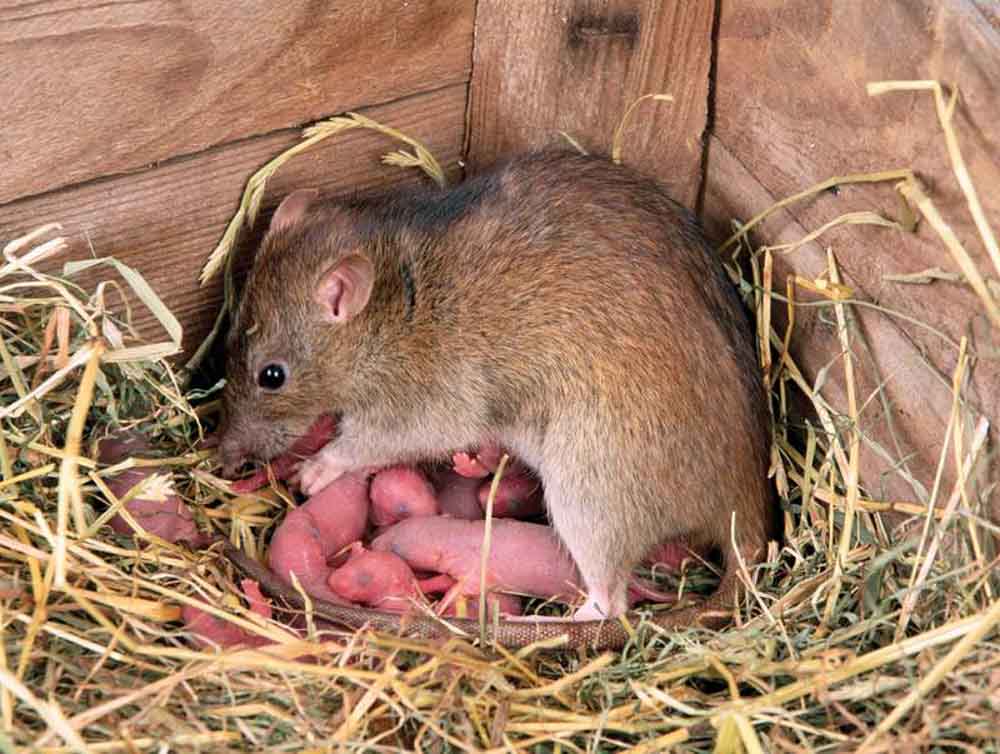 The color of the mouse is usually characterized by gray, brown or red tones, however, there are variegated and striped individuals, as well as white mice. Animals lead an active lifestyle in the evening or at night. They communicate with each other using a thin squeak.
The color of the mouse is usually characterized by gray, brown or red tones, however, there are variegated and striped individuals, as well as white mice. Animals lead an active lifestyle in the evening or at night. They communicate with each other using a thin squeak.
Types of mice, names and photos.
The mouse family includes 4 subfamilies, 147 genera and 701 species, the most common of which are:
- (lat. Apodemus agrarius) reaches a size of 12.5 cm, not counting the tail, which can be up to 9 cm long. grey. The habitat of the field mouse includes Germany, Hungary, Switzerland, Poland, Bulgaria, the southern part of Western Siberia and Primorye, Mongolia, Taiwan, the Korean Peninsula and certain territories of China. This species of mice lives in wide meadows, in dense thickets of shrubs, city gardens and parks, and the shelter suits both in minks and in any natural shelters. In flooded areas, nests in bushes. Depending on the season, the diet may consist of seeds, berries, green parts of plants and various insects.
 The field mouse is the main pest of grain crops. nine0241
The field mouse is the main pest of grain crops. nine0241
- (lat. Apodemus flavicollis) has a reddish-gray color and a light belly (sometimes with a small speck of yellow). The body size of adults reaches 10-13 cm, the tail has approximately the same length. The weight of the mouse is about 50 grams. This species of mice is widely distributed in the forests of Russia, Belarus, Moldova, Bulgaria, Ukraine, the Caucasus, the northern provinces of China and Altai. Yellow-throated mice settle on open edges in tree hollows or dug minks, but they can also live in stony placers. Their diet includes both plant and animal foods. Eating young seedlings of fruit trees, they cause significant harm to nurseries. nine0241
- Grass mouse (Nilotic grass mouse) (lat. Arvicanthis niloticus) is one of the largest representatives of the mouse family and can reach 19 cm in length, and together with the tail - 35 cm. The weight of individual large individuals exceeds 100 g.
 The fur of the back and sides has a dark gray or grayish brown coloration with individual hard and prickly bristles of a darker shade. The color of the belly is light grey. This species of mice is most common in African countries, where they live in bushes, forests and savannahs. As a refuge, grass mice choose abandoned termite mounds or dig holes on their own, but on occasion they can penetrate into human habitation. The basis of the diet of mice is plant foods. nine0241
The fur of the back and sides has a dark gray or grayish brown coloration with individual hard and prickly bristles of a darker shade. The color of the belly is light grey. This species of mice is most common in African countries, where they live in bushes, forests and savannahs. As a refuge, grass mice choose abandoned termite mounds or dig holes on their own, but on occasion they can penetrate into human habitation. The basis of the diet of mice is plant foods. nine0241
- (lat. Micromys minutus) is one of the smallest rodents in the world. The body length of an adult animal does not exceed 7 cm, the tail is 6.5 cm, and the weight of the baby does not exceed 10 g. The back and sides are monophonic and have a reddish-brown or brown color, in contrast to the light gray, almost white belly. The muzzle of baby mice is short and blunt, with small ears. The distribution range of this species of mice stretches from west to east from the northwestern provinces of Spain to Korea and Japan, in the south to Kazakhstan, China and the northern regions of Mongolia.
 The mouse lives in forest and forest-steppe zones, in meadows with tall grass. In the summer, mice use nests twisted in the grass as a refuge, and winter in minks, haystacks, residential or outbuildings of a person. The basis of the diet of baby mice is the seeds of cereals and legumes, as well as small insects. Often they settle near granaries, causing great harm to agriculture. nine0241
The mouse lives in forest and forest-steppe zones, in meadows with tall grass. In the summer, mice use nests twisted in the grass as a refuge, and winter in minks, haystacks, residential or outbuildings of a person. The basis of the diet of baby mice is the seeds of cereals and legumes, as well as small insects. Often they settle near granaries, causing great harm to agriculture. nine0241
- (lat. Mus musculus) is the most common species on the planet from the rodent family. The body length of an adult mouse does not exceed 9.5 cm, and together with the tail - 15 cm. The weight of the mouse is 12-30 g. The color of the fur on the sides and back is gray with a brown tint, and on the abdomen from light gray to white. Individuals living in desert areas have a sandy color. The muzzle of the mouse is sharp with small rounded ears. The area of distribution of this species of mice does not include only the territory of the Far North, Antarctica and high mountain regions.
 House mice live in all types of landscapes and natural areas, very often they penetrate into household and residential buildings of a person. Under natural conditions, minks dig on their own, although they can also occupy dwellings abandoned by other rodents. They feed on seeds and succulent green parts of plants, and when they enter a person’s house, they consume everything that gets into their teeth - from bread and sausages to paraffin candles. nine0241
House mice live in all types of landscapes and natural areas, very often they penetrate into household and residential buildings of a person. Under natural conditions, minks dig on their own, although they can also occupy dwellings abandoned by other rodents. They feed on seeds and succulent green parts of plants, and when they enter a person’s house, they consume everything that gets into their teeth - from bread and sausages to paraffin candles. nine0241
- (lat. Lemniscomys striatus) is a small rodent: body length 10-15 cm, intermittent stripes of light colors are visible along the back and along the sides. Under natural conditions, striped mice rarely live more than 6-7 months, in captivity they live two to three times longer. The menu of these individuals includes mainly vegetable “dishes”: root crops, non-hard seeds, juicy fruits, and occasionally small insects.
- (akomis) (lat. Acomys) is a pretty cute representative of the mouse family, the owner of huge eyes and the same big ears.
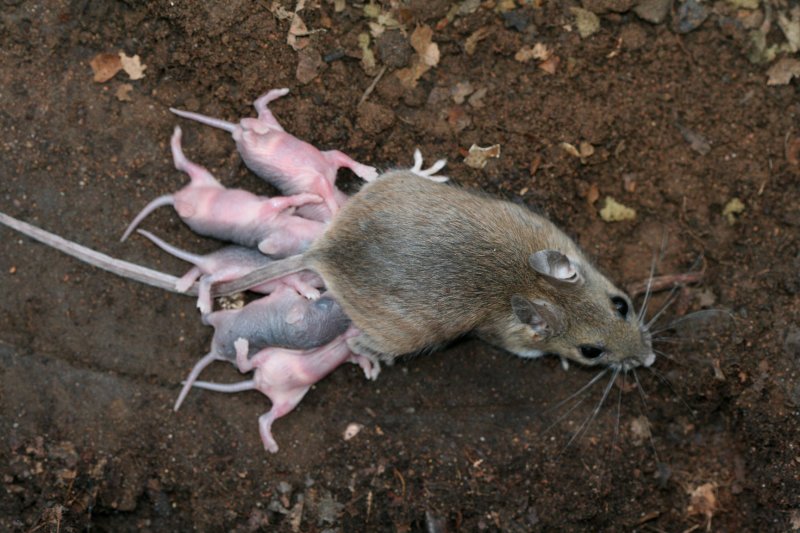 The size of the spiny mouse, together with the tail, is 13-26 cm, the back of the animal is covered with thin needles, like a normal one. An amazing feature of these animals is regeneration: in case of danger, the mouse is able to shed a piece of skin, leaving the attacker at a loss. The skin is quickly restored without harm to the individual. The spiny mouse lives in Asia, is found in Cyprus and Africa. In food, it focuses on plant foods; this animal is often kept as a pet. nine0241
The size of the spiny mouse, together with the tail, is 13-26 cm, the back of the animal is covered with thin needles, like a normal one. An amazing feature of these animals is regeneration: in case of danger, the mouse is able to shed a piece of skin, leaving the attacker at a loss. The skin is quickly restored without harm to the individual. The spiny mouse lives in Asia, is found in Cyprus and Africa. In food, it focuses on plant foods; this animal is often kept as a pet. nine0241
Where does the mouse live?
The area of distribution of mice covers almost all climatic zones, zones and continents of the globe. Mouse representatives can be found in tropical thickets, coniferous or deciduous forests, steppe expanses and deserts, on mountain slopes or in swampy areas. Mice also live in people's homes.
Mice can make nests from grass stalks, occupy abandoned burrows, or dig complex systems of underground passages. Unlike species that live in swamps, mountain, steppe, and forest mice are poor swimmers.

